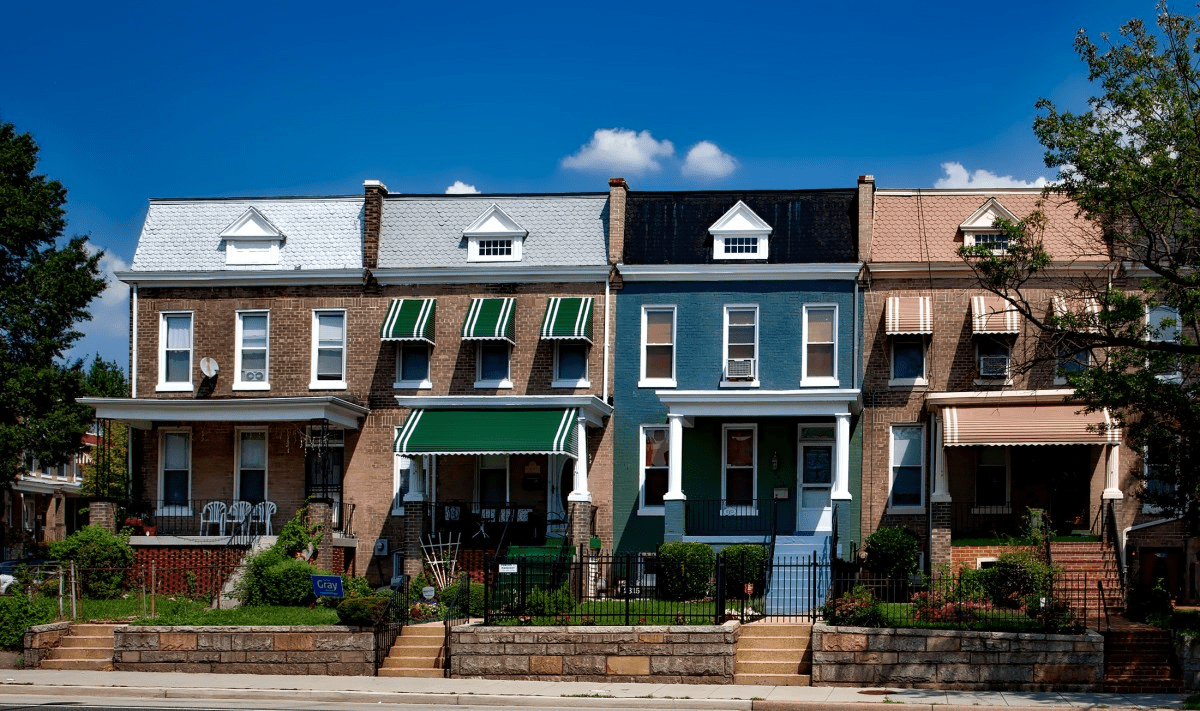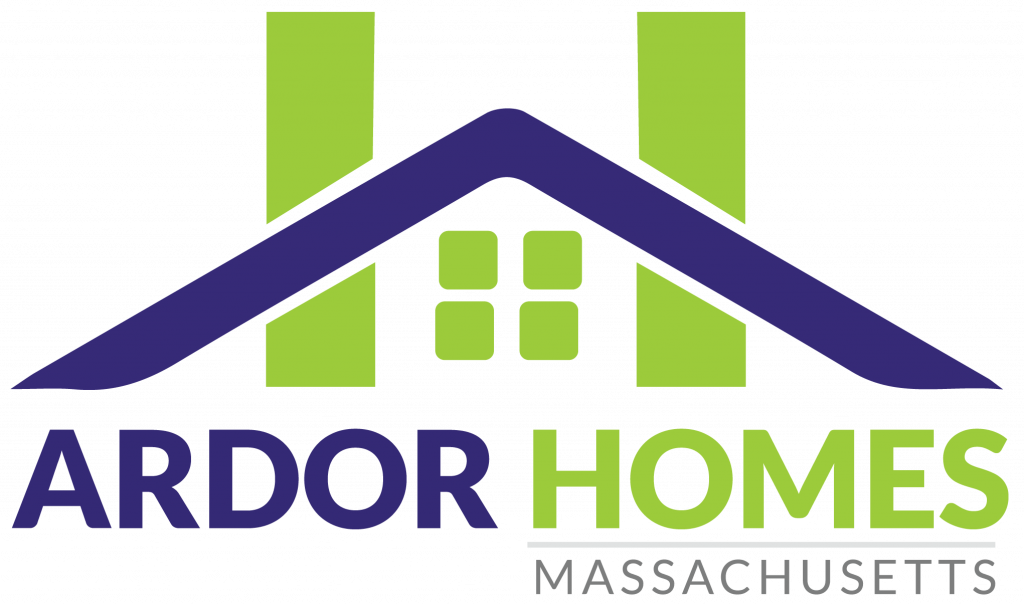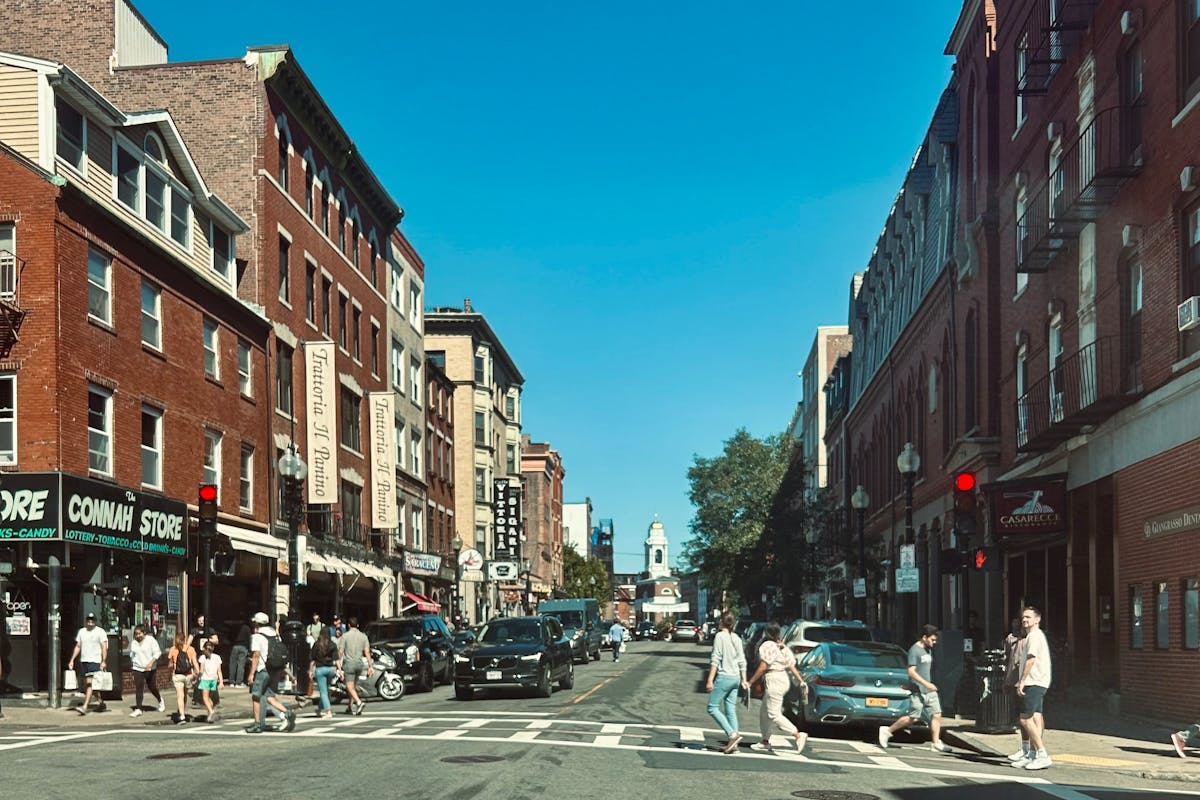
Purchasing a home is a life-altering decision that requires lots of analysis and research. From colonial-style and cape cod homes to ranch-style and Tudor homes, every type of homebuyer will find an appealing house style.
It is safe to safe that selecting the property type you invest in is just half of the battle. After applying a host of filters that include amenities, location, and budget, you still have plenty of options to choose from.
One such house style with a long history (predating the nineteenth century) in U.S. metropolitan areas is the row house.
But before you embark on your home purchase journey, explore the fundamental characteristics of this popular home style.
What is a Row House?
Row houses are a sequence of dwelling units in a row, sharing common compound walls and a common exterior. Each single-family dwelling unit shares a compound with three neighboring buildings. The first and last units in a row are usually more spacious than those in between.
The row housing design is common in highly populated areas, and homes have identical facades lining up next to each other on street blocks. This type of housing may be the perfect option if you prefer buying a home in the city. A block of units is usually under a homeowners association.
What’s the Difference Between Row Houses, Town Houses, and Brownstones?
All three are popular city residencies, with some major differences.
- A row house—A single or multi-family home sharing a common roof and shared walls with the next property. Rowhouses are townhouses, but the same does not apply to vice versa.
- Townhouse—Each townhouse is an individually owned multi-level dwelling unit sharing one or two exterior common walls with the next unit. Unlike row houses, townhouses do not share the same exterior appearance, and they come in various architectural styles.
- Brownstones—These are townhouses or rowhouses with a brownstone facade—a reddish-brown sandstone. Brownstones are common in Brooklyn. A brownstone can be a row house, only if it features sandstone.
What About Row Housing and Terraced Houses?
Both are the same thing. The only difference is terminology usage and preferences.
Row housing is a generic North American term. Terraced houses is a UK term.
Popular Row House Locations
Row houses are common in larger and older cities. However, you will find this architectural style all over North America.
The housing style is most common in:
- San Francisco—The “Painted Ladies” are a common feature on tourist sites, especially the houses on Steiner Street. The San Francisco streets also appear in many beloved movies and shows, including the opening credits of Full House!
- Philadelphia—The City of Homes boasts row houses in just about every alley and street. Historical lore deduces that the term “Philadelphia row” comes from the city and describes an orderly row of regularized homes.
- New York City—Parts of Brooklyn and Manhattan neighborhoods boast of beautiful row home development. Some row homes are a development of a single family to allow children to live on the same street!
Characteristics of the Row House Style

Row housing is a popular style that typically boasts an elegant design. These homes also exhibit specific features that make them prized real estate properties.
Here are a few characteristics of the row housing design.
Community Living
A prominent feature you cannot ignore. Row housing offers the benefits of a gated community without the cluttered feel and looks of apartments.
Modern row houses generally provide go-to amenities such as sports arenas, clubhouses, and swimming pools. Some units also boast 24-hour CCTV and security surveillance.
Investors may also benefit from eco-friendly facilities and amenities, such as rainwater harvesting and solar power.
Uniform Architecture and Plan
Living in a row home is like taking a peek into the rustic English countryside lifestyle of the 80s. The architecture of the homes will satisfy individuals who have a knack for the vintage.
Each house features the same interior design, but a unique backyard, patio, and staircase. Many houses often share the same exterior features, like stylistic flourishes such as cornices or color.
The living room space is usually in the front, while the dining room and kitchen area are at the rear at ground floor level. Bedrooms are on the upper levels and some houses come with attics and basements.
Getting a row home offers the perfect combination of old-world and modern design infrastructure.
Number of Homes
Each house connects to at least two other properties of the same type to qualify.
Low-Rise
This is a low-rise construction where each house shares one or both side walls with the neighboring building. Each home is between two and five stories high.
Other Characteristics
Other key characteristics of the row home construction design include:
- Can accommodate one or two families
- Available in different colors depending on the neighborhood character and location
- Windows are in the front and back only
Types of Row Houses
Row houses are more known for their stoops, large front windows, and uniform exteriors. However, you will probably come across different styles of row house structures when shopping for a home.
Some popular variations are below.
Georgian—1710 to 1830s
The homes have two to three stories, a brick exterior, and street-level entrances. You will also get homes with a basement kitchen, fireplaces on all levels, and symmetrical windows.
Federal—1780 to 1840s
These homes draw inspiration from Roman and Greek architecture. The houses have a low stoop, paneled wood doors, and are two to three stories high.
Greek Revival—1830s to 1860s
Originating from the Federal row houses, the Greek Revival homes also have a simple exterior. Features include three stories, symmetrical windows, pilasters or columns in the entryway, and flat roofs.
Gothic Revival—1840s to 1860s
These houses are common in Philadelphia, New York, and Washington D.C. Some characteristics are full or partial brownstone exteriors, multi-paned windows, arched doorways, and flat roofs.
Italianate—the 1840s to 1880s
The most common brownstone architecture style, Italianates, is common in Brooklyn, NY, and San Francisco, CA. These properties have long windows, over three stories, round-top windows and doors, and might have colorful exteriors.
Neo-Grec
These stylized row houses have angular forms and high levels of detail. Features are cast-iron handrails, two to four stories, and pilaster-frame doorways.
Pros and Cons of Row Housing
Owning a unique and charming row home comes with basic merits and demerits.
Pros
Owning a row home offers several benefits, including:
- Less expensive than single-family homes, making them ideal for first-time city homebuyers
- You get more square footage without the price tag
- Less maintenance because there is no front yard and driveway
- You will live on a property in a historic neighborhood
- Row housing offers a better Return on Investment (RoI) than that of an apartment
- The interiors are easy to change
Cons
Owning or living in a row home also comes with a few challenges, including:
- No driveway or attached garage
- Lack of a front or back yard for entertainment, kids, or pets
- The uniformity can be a drawback if you prefer a home that stands out from the others
- Sharing walls means you may hear your neighbors
- Narrow stairwells make furnishing the home difficult
- Limited natural light because the windows are at the front and back only
Wrapping it Up
If you are looking for a home with a vintage touch but with modern amenities in American cities, the row house is an excellent option. There is no doubt about the increasing popularity of this housing style, and how it can upgrade your lifestyle.

In her 25-year career, Steph Wilkinson has been involved in the acquisition, marketing and sales of over $3 Billion dollars of residential real estate. A number of years ago, Steph transitioned into Brokerage Leadership for National real estate brands and tech start-ups. She has served as a Business Strategist for real estate agents and brokerages alike and is also a real estate coach and trainer. In her new role with the Iconic Team, Steph will be responsible for the growth of the team and will be working with all of our agents to increase their productivity and bottom line.




